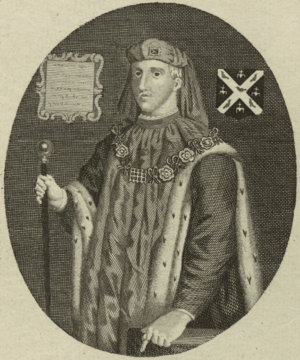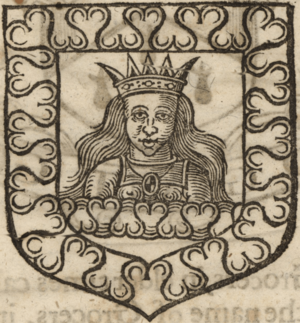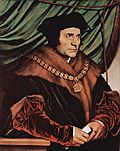The Mercers' Company facts for kids
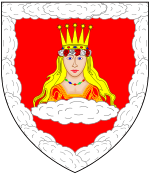 |
|
| Motto | Honor Deo ("Honour to God") |
|---|---|
| Location | Mercers' Hall, 6 Frederick's Place, City of London |
| Date of formation | 1394 |
| Company association | General merchants |
| Order of precedence | 1st |
| Master of company | Mr Peter Lane |
The Worshipful Company of Mercers is the oldest and most important livery company in the City of London. It holds the top spot among all the Companies. It is also the first of the Great Twelve City Livery Companies.
Today, the Company mainly works as a charity. It helps many different causes. The Company's motto is Honor Deo, which means "Honour to God" in Latin.
Contents
What is the Mercers' Company?
The Mercers' Company is based at Mercers' Hall in the City of London. This area has a long history. Under the hall, archaeologists found parts of an old Roman-British temple.
The Company started a very long time ago, possibly even before the 1100s. It was first a group of people working together.
A Look at History
In the early 1200s, the first two Mayors of London, Henry fitz Ailwin and Robert FitzAlwyn, were thought to be members. Around this time, a part of the Company, called the Company of Merchant Adventurers, started. They set up in Antwerp, which was a big center for trading cloth.
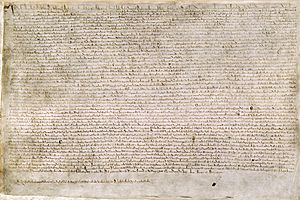
Serlo le Mercer was a member of the Company. He was also the Lord Mayor of London five times in the early 1210s. He helped negotiate the Magna Carta, an important document that limited the king's power.
The Company officially became a corporation in 1394. This happened with a Royal Charter, which is a special document from the King. The Company's main goal was to be a trade association for merchants. They especially focused on selling wool and buying fancy fabrics like velvet and silk. These fabrics were called "mercery."
From the 1300s, the Company met at the Hospital of St Thomas of Acre in Cheapside.
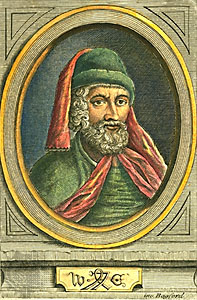
Around 1438, William Caxton became an apprentice with the Mercers. He became a full member in 1452. His work took him to the Low Countries (modern-day Belgium and Netherlands).
Between 1517 and 1524, the Company built the Mercer's Chapel on this land. The first Mercers' Hall was built above it, facing Cheapside.
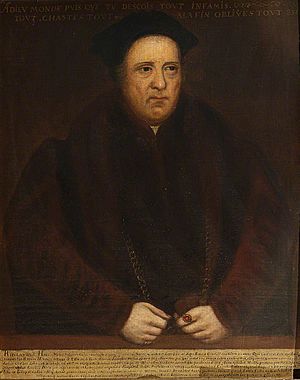
In 1536, a Mercer named Robert Pakington was murdered. This was the first recorded death by a handgun. He was known for bringing English Bibles from other countries. This might have been why he was killed.
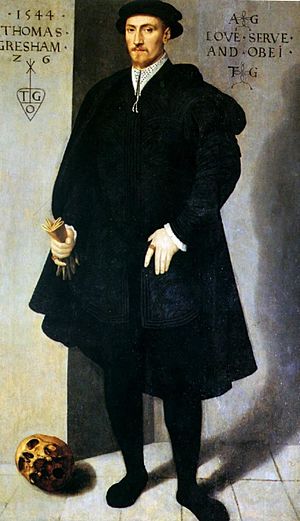
Sir Thomas Gresham, who started the Royal Exchange, was also a Mercer. He joined the Company in 1543 when he was 24. Later that year, he traveled to the Low Countries. There, he worked as a merchant and also as an agent for King Henry VIII.
An important old statue called "The Dead Christ" was hidden under the chapel floor. It was found during repairs after World War II bombing. This statue was saved from being destroyed during the English Reformation.
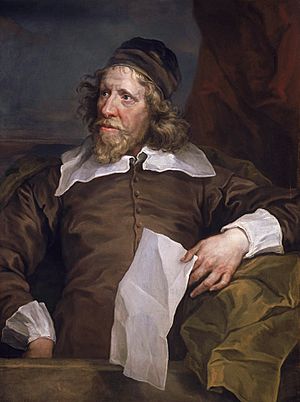
Inigo Jones, a famous architect, became a member in 1620.
The first Mercers' Hall was destroyed in the Great Fire of London in 1666. A second Hall opened in 1676. It was designed by Edward Jarman and John Oliver.
The Hall was renovated between 1877 and 1881. The porch of the 1676 building is now part of Swanage Town Hall.
The front of the building was changed by George Barnes Williams. The inside was redesigned by John Gregory Crace. This Hall was also destroyed by fire in 1941 during the Blitz.
The third and current Mercers' Hall opened in May 1958. It was designed by E. Noel Clifton. This Hall uses parts from the old Hall, like some woodwork from the 1600s and stained glass from the Victorian era.
The Mercers' Company is the only City Livery Company that has its own private chapel.
Becoming a Member
Children whose parents were members when they were born can automatically become Mercers. This is called 'patrimony'.
Most other members join because they have a family link to the Company. They get their membership through 'Redemption'. This means they are interviewed and, if approved, they pay a fee.
Other people can also become members by Redemption. Sometimes, membership is given to honor someone special. Famous members who joined this way include Thomas More and Winston Churchill.
Another way to join is through apprenticeship. This was very common in the past. An apprentice would work for a member for about seven years. In return, the member would teach them skills. After this time, the apprentice became a 'Freeman'. Freemen of a Livery Company are also Freemen of the City of London. This used to give them special rights, like being able to drive sheep over London Bridge for free!
What Does "Mercer" Mean?
The word "mercer" comes from the Latin word merx, which means "merchandise." The word "merchant" also comes from this root.
In Spanish and French, the words mercero and mercier are still used. They mean something similar to a "haberdasher" (someone who sells small sewing items). However, medieval mercers would not have seen themselves as related to that trade. That was handled by a different group, the Worshipful Company of Haberdashers.
Helping Others: Charitable Work
The Company does a lot of work in education. It has managed St Paul's School since 1509. It also supports St Paul's Juniors and St Paul's Girls' School. The Mercers also have strong ties with other schools. These include Collyer's College, Dauntsey's School, and Abingdon School.
Recently, the Company has helped start new schools. These include Thomas Telford School, Walsall Academy, and Sandwell Academy.
There was also a Mercers' School which started in 1447. It closed in 1959.
In 2011, the Mercers helped start Hammersmith Academy. This school focuses on creative and digital media and information technology.
The Mercers' Coat of Arms
The "Mercers' Maiden" is the Company's special symbol. No one knows exactly where it came from. Unlike most other Livery Companies, the Mercers did not get an early grant of arms. But in 1425, they were given a common seal. This early seal showed a simpler version of their current coat of arms.
In 1530, the Company told the College of Heralds that they only had the Maid's Head for their seal. In 1568, the Heralds officially registered this seal as the Company's arms.
In 1911, the College of Arms confirmed the arms. They also gave the Company a crest and the motto, 'Honor Deo' (Honour to God).
What They Do Now
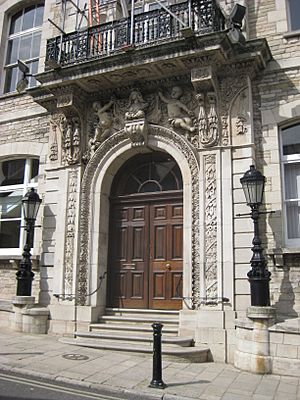
Every year, the Mercers' Company publishes a report on their activities. They own many properties, including 90 apartments in Covent Garden. On average, they give away about £7 million each year to charities. This is a big part of what all the livery companies donate.
Famous Mercers
Here are some famous people who were Mercers:
- Serlo le Mercer: He was the Third Lord Mayor of London and helped negotiate the Magna Carta.
- William Caxton: A famous printer.
- John Dee: A mathematician and astrologer.
- Sir Thomas Gresham: A merchant, financier, and founder of Gresham College.
- Robert Baden-Powell, 1st Baron Baden-Powell: He started the Scout movement.
- John Colet: He founded St Paul's School, London and was a dean of St Paul's Cathedral.
See also
- Kilrea, a settlement in Northern Ireland linked to the Mercers.


